#Chicken Manure Composting
Explore tagged Tumblr posts
Text
Understanding NPK Analysis in Different Types of Manure: A Guide for Farmers
Manure is one of the most cost-effective and environmentally friendly fertilizers available to farmers. However, not all manure is created equal. Understanding the nutrient composition—commonly expressed as NPK (Nitrogen, Phosphorus, Potassium)—is crucial for optimizing crop yields and soil health. Here’s a detailed breakdown of the NPK analysis for common types of manure, along with…
#chicken manure benefits#composting manure#cow dung farming#crop-specific fertilizers.#farmers trend#farming best practices.#goat manure fertilizer#manure NPK analysis#manure types comparison#nitrogen-rich manure#organic farming techniques#organic fertilizers#phosphorus in manure#pig manure composting#potassium in manure#rabbit manure nutrients#sheep manure uses#soil fertility tips#sustainable farming#vegetable farming fertilizer
0 notes
Link
1 note
·
View note
Text
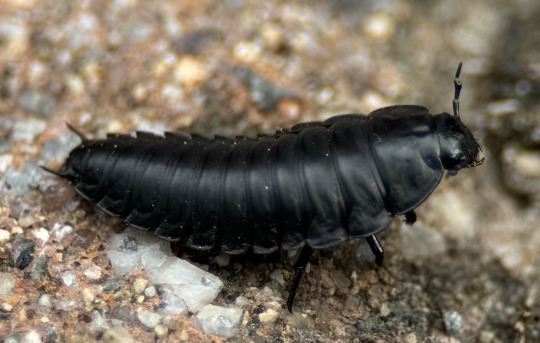

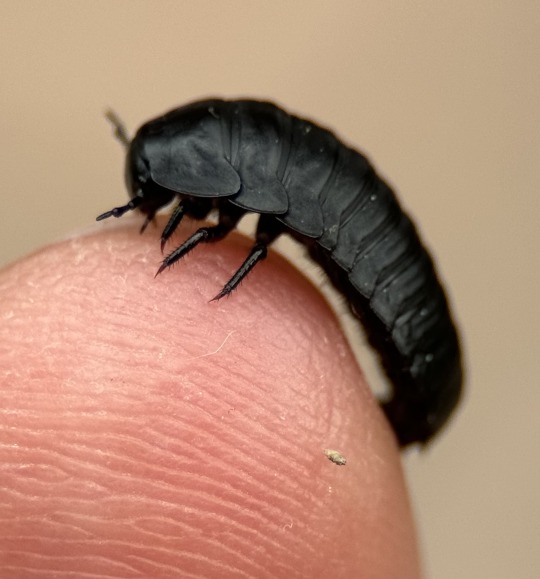
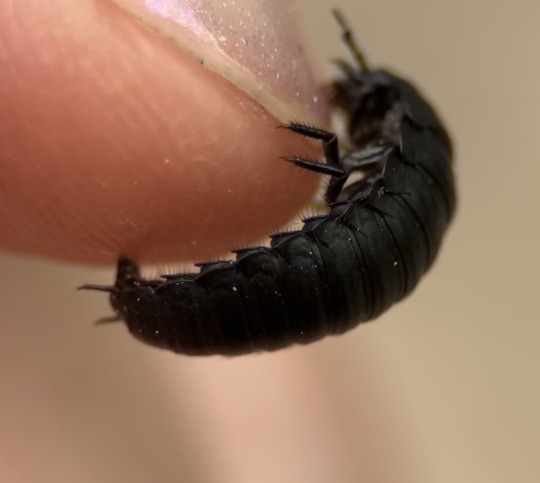
I thought this feisty little critter was an isopod until I got a closer look. This is a carrion beetle larva, and, as their name suggests, adults and larvae of this insect eat dead animals, maggots that live in carrion, and/or other types of decaying organic matter. I have no idea where this one came from, since there were no dead animals nearby or compost. Perhaps an insectivorous bird dropped it, or maybe this particular species likes chicken manure (there was a chicken tractor nearby vroom vroom). Putting this next part below the cut because it's a little gross. Proceed with caution:
This carrion beetle child seemed somewhat hungry, as it was nibbling at some dead skin around my finger nail. It tickled a bit and reminded me of the shrimp they sometimes have at aquariums that will nibble at your fingers. Yes that's a thing.
unidentified Silphidae larva Northeastern Pennsylvania, US
#carrion beetle#Silphidae#beetle#coleoptera#carrion beetle larva#larva#insect#nature#bugs#nature photography#biodiversity#animals#bugblr#inaturalist#arthropods#entomology#insect appreciation#child#chicken tractor#vroom vroom#not an isopod#nature's best manicure#nom nom#creature#macro#macro photography
2K notes
·
View notes
Text
I also don't think we give Sammy enough credit for keeping things together when she's a farmer and had to leave her ranch behind.
Who's doing the chores?
Her neighbor's dead.
Did she text her family-----------did she text her other neighbor to say "Hey, I'm leavin' the ranch for a while, it's an emergency, can you feed Bessie and her calf and the chickens? And the dinosaur, if she's stickin' around? Thanks! I'll pay you when I get back!"?
Who's weeding her garden? Who's buying the feed? Who's shoveling the manure, who's turning the hay, who's storing the eggs, who's selling the eggs, who's milking the cows, who's tending the compost, who's fixing the floorboards, who's doing everything you need to do on a farm because a farm is a place of labor???
#honestly she probably thought about her cows and just went#“Well I guess I'm saying goodbye to Bessie too that might as well happen”#jwct#chaos theory#sammy gutierrez#neck and neck with Brooklynn for the Most Adult of them#she has a FARMHOUSE#ALL BY HERSELF
36 notes
·
View notes
Note
dad what do we do when the world goes to hell. im scared
Survive.
If you have the money, buy a firearm and learn how to use it. Nothing crazy—a .22 rifle is good enough. It'll take an elk if you know where to shoot.
Plant a victory garden and learn to can. Root vegetables and proteins are your best friends—that means potatoes, onions, garlic, legumes like peas and beans. Cowpeas are good if you live in an arid region in case you can't afford water or don't have water in accessible enough quantities to be using it for crops. If you have the space, allow for corn as well, as long as it's not sweet corn. Get Dark Star zucchini—it's a cultivar bred for drought conditions, with deep roots—along with melons like rockmelon and pumpkins, and also tomatoes. All of these are deep-rooting and will be able to water themselves with little supplementation if your water is limited. You'll also want crucifer crops for the sake of vitamin C. Crucifers don't use much water either.
(Make a rain barrel, on that note.)
If you have the outdoor space, you want to have rabbits. Rabbit meat tastes like chicken, it only takes a few months for them to reach slaughter age (you'll want to do this when they're around 5lb/2kg for maximum profit on the meat), and they will thrive on nothing except access to fresh grass or dried hay. They're silent, so your neighbours won't complain about noise that could get your chooks taken away in a suburban environment, they're easy to house, easy to slaughter, easy to skin, you can sell their hides or use them yourself if you learn how to tan them and work them, and the best part is that rabbits are considered one of the best producers of cold manure. Cold manure means that you don't need to compost their manure before using it, as it won't burn the roots of your crops. The ONLY downside to rabbits is that their meat is extremely lean. If you eat nothing but rabbit meat, you will starve to death. You need to supplement fat from elsewhere, which brings us to our next bit...
Pumpkin seeds and sunflower seeds are your best friend if the agricultural system completely shuts down. You can grow both of these at home, and the seeds are high in fat. Your body and brain (ESPECIALLY YOUR BRAIN) needs fat to survive. This is why people starve to death when they only eat rabbits or squirrels or other small, lean game. Another good source of fat is fish, especially salmon and trout, but your ability to find those depends on your location.
I'm telling you all this because it's how my grandparents got through the Great Depression. I hope you won't need any of this, but it's here just in case.
Above all else, just help each other. Be there for your neighbour so that they'll be there for you. Be patient. Be kind. Be understanding. "What you have done for the lowest amongst you, so you have done for me." I think Jesus said that, or something.
20 notes
·
View notes
Text
Joel Salatin of Polyface Farms uses “egg mobiles” – portable chicken coops – to address soil degradation, pest control and nutrient recycling in farming. Chickens follow cattle – breaking down cow manure, reducing fly populations, spreading natural fertilizer and improving soil health.
Modern agriculture relies on chemical inputs, monocultures and overgrazing, leading to soil erosion, nutrient depletion and environmental harm. Salatin’s approach mimics natural grazing patterns to restore ecological balance.
Chickens not only sanitize pastures by eating fly larvae but also convert insects into high-quality protein, producing nutritionally superior eggs. Polyface Farms’ eggs, for example, contain 20 times more folic acid than USDA standards.
Salatin advocates for decentralized, community-based agriculture over industrialized systems. He emphasizes empowering individuals to grow their own food or support local farms to create sustainable, resilient food systems.
Salatin encourages small, actionable steps like raising backyard chickens or composting to build a regenerative future. He stresses that individual decisions today will shape the world in decades to come.
8 notes
·
View notes
Video
youtube
Want to grow your own sweet, vibrant beetroot even if you don’t have a garden? 🌿 In this video, I’ll show you step-by-step how to grow healthy beetroot in beautiful terra-cotta containers—from choosing the right pot to mixing the perfect soil blend with composted chicken manure 🐓🌱. It’s easier than you think and super rewarding!
#youtube#youtube video#youtube views#video#videos#guide#video guide#gardeningvideo#gardening#gardenblr#gardencore#garden#gardens#gardeningtips#howtogrow#growyourown#grow#how to grow#vegetables#vegetable gardening#vegetablegardening#vegetable garden#growvyour own vege#veggies#veg#beet#beets#beetroot#beetroots#container
3 notes
·
View notes
Text


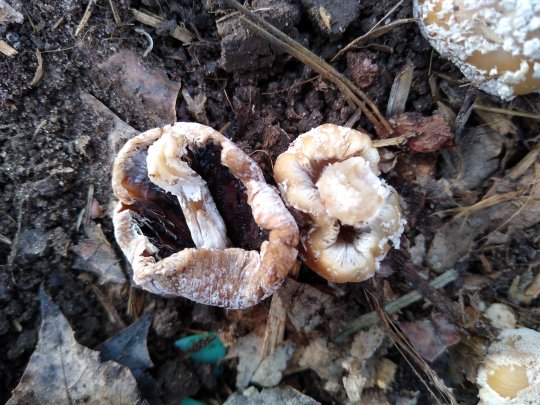
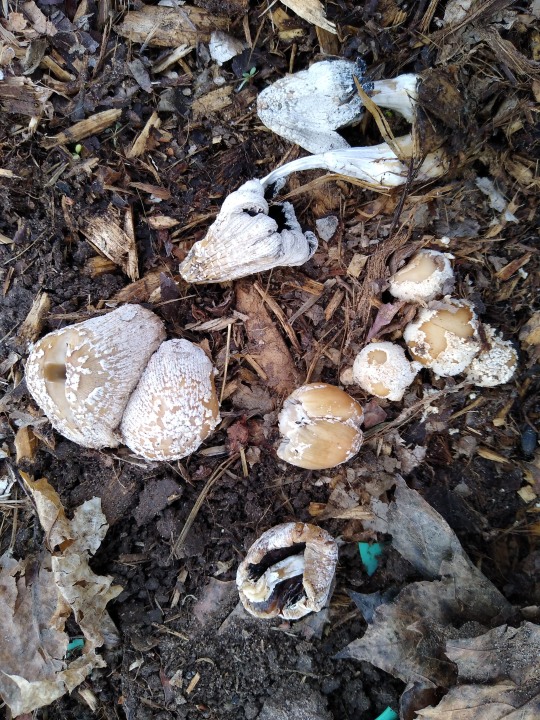


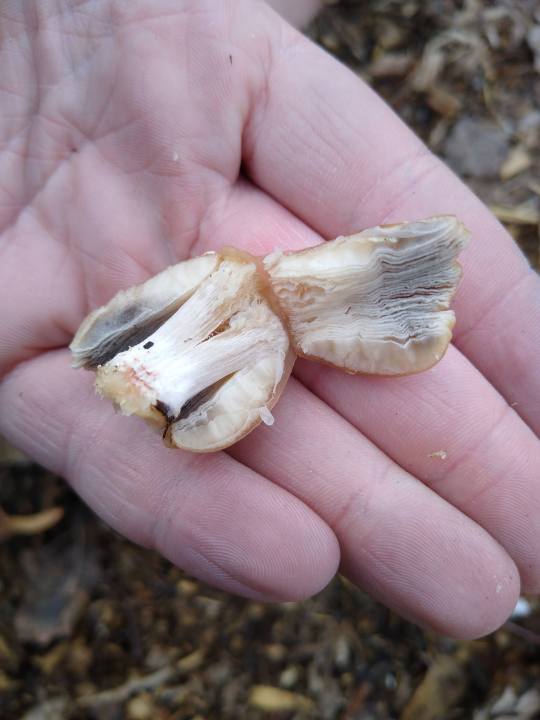

I have some new neighbors! This little family is popping its heads up to get some spores out while the weather is still a little chilly and the rains are common, but just before we get hit with a sudden-onset Summer. Probably genus Coprinellus, but I can't pin down a species. C. micaceus is the most commonly observed near me, but they don't look similar enough for me to call it.
I'm overjoyed to see them, especially growing in my garden. I prepared this spot in the spring and early summer of last year, tilling out and moving the first few inches calcium-heavy, silty clay that makes up this ancient lakebed that I live on and replacing it with basically-raw horse manure and woodchips. I added things through the year -- leaves, composable goods, algae-filled rainwater, chicken compost, but mostly let it rest. When I'd dig holes to bury compostables, the woodchips would stick in clumps held together by mycellium that smelled rubbery and fungal, the same smell that these mushrooms have. I'm glad to see how much this group is thriving here, and excited about what the decomp will mean for the garden plants.
Ancient-lakebed-turned-dry-sagebrush-steppe soil aside, I live in an urban area that's been depleted for many, many years. The soil was so poor that the turfgrass had a hard time growing even with the chemicals that we used to have sprayed, back before we knew how these things are supposed to work.
The turfgrass is gone, and hopefully so are the chemicals, replaced by arborist's chips and bloodmeal. We sowed a native pioneer species blend at the end of fall where the humans hang out and clover will be going where the dog does. It's not perfect, but neither are we, and we do what we can with what we have. After all, anything is better than turfgrass, and the fungus is making sure I remember that.
#interested parties can dm me for the iNat observation if you wanna help with ID#this one's a thinker. no one's observed anything like it nearby#mycology isn't my focus so I don't even know where to start but lemme know if you need more photos#mycology#mushrooms#fungi#animism#heathenry#norse pagan#my post#my garden is my church. filled with teachers and guides#& observing and naming is like. a sacred act. to me. learning the names of the guides and teachers#and listening to them
5 notes
·
View notes
Text
Hey all,
Quick little garden pic update :)
Won't be everything, just a lil one :)

Sweetbpotatoes have started perking back up, very excited for some more greens soon! :D

The oregano, I've been letting it go to flower so it hopefully will self seed a bit of this corner. I don't mind if it goes hogwild as I hot plenty of use for it :) even if for nothing more than chicken feed and pollinator attractor.

The thyme. I pulled a peice that has rooted and didn't expect it, so I may come through and pull a little bit to transplant elsewhere for a secondary patch

The sunchoke and green onion bed. The green onions were part of a regrow try that's been left to go sort of on its own.
We likely wont eat any sunchoke this year, unless they produce extra well. I want to spread out a few raised bed patches for some edible landscaping, just hope the parrots don't mistake them for regular sunflowers.
The green onions went to seed and it looks like already dropped them or the wild birds ate them (I really need to get on those lil seed bags)
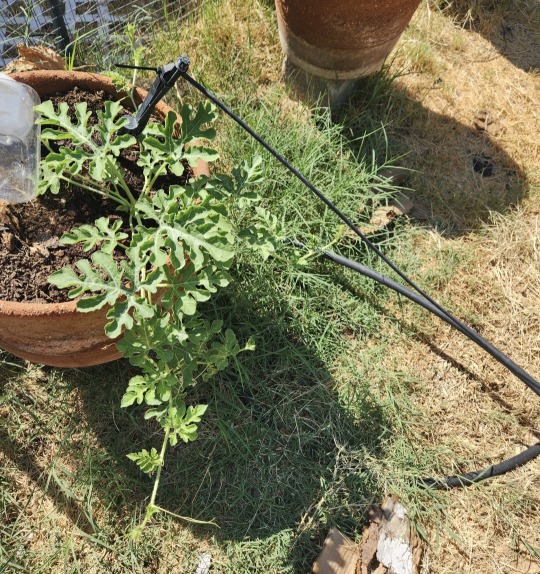
A suprise melon, not sure if it's watermelon, cantaloupe or honeydew though as I threw all 3 out into the "patch" zone.
Dugbit up as I was intending to use it for a short time for chick growout pen.
It was so they could raze the ground of any potential grass and afterwords when time to go to the adult coop I could toss the paper, cardboard and some amendments down on top before the manure (slow soil build up)
Instead I currently have a hole in the back 😅 while I wait for more composted manure to come in.
That's it for today's quick post :)
🌱Happy homesteading and farming 🌱
July 10 2024
#homesteading#thestudentfarmer#self sufficient living#studentfarmer#self sufficiency#food#garden#gardening#low waste#chickens#grow what you eat#human right to clean food#right to grow food#right to grow#food is a human right#smalls scale differences#urban biodiversity#urban green spaces#urban homesteading#urban gardening#urban farming
13 notes
·
View notes
Note
what do you know about pigeons
Been thinking a lot about intentional erecting of dovecotes as a means of pigeon population control, recently. It’s very funny to me, though I suppose that’s not really the right word, that the best way to control pigeons as pests is to care for them. I guess that’s what you get with domestic animals. Their droppings are problematic because they do not have a sufficient diet (and those droppings are therefore liquid, as opposed to a healthy dropping that is a neat and easy-enough-to-sweep-up ball) and generally localized to under their perches (and as originally cliff-dwelling birds, buildings are the next best). So if they are provided access to grains, localized to singular locations that also provide shelter that-is-not-buildings that also gives people access to them to swap out fertilized eggs that would be making more pigeons with fakes that will not. I guess the most comprehensive attempt at this was in Germany, but I have seen things around that various Czech cities are pushing for it. I’d be interested to see a cost breakdown of dovecote construction and ongoing maintenance and feed costs, and any levels of damage-by-pigeon, ongoing cleaning and such of areas infested by pigeons that they still deal with and such compared to more traditional methods of culling and repellent, and any cleaning and such as well.
Also also also! This also provides good access to those pigeon droppings, that make excellent fertilizer. I haven’t read about that as much as I’d like to, I mostly just throw my pigeons’ waste in my compost and let it do its thing, but one interesting point of interest I’ve seen lately is that, while they are highly nitrogen rich like chicken and other poultry droppings, they apparently release that nitrogen at a much slower rate than these others. I haven’t read any proper sources on some of this, like its exact nutrient makeup and how it compares exactly to other forms of manure practically speaking, so that’s probably on my list of things to do at some point. It’s certainly one of the significant historical benefits of dovecotes, but I imagine part of that is as much the practicality of gathering a localized source of manure (and meat, while they were at it) that you didn’t necessarily have to provide feed for.
#sorry for taking 40 years to answer this#a very It's Not You It's Me sort of problem#was very excited to get it but then i overthink everything and take 40 years to deal with those things
23 notes
·
View notes
Text
youtube
Guest presenter, Jude, shares some beginner tips on how anyone can get a garden growing from the ground up.
Jude’s garden is pumping with enough fruit and vegetables to feed the family and share the excess, but it all started with a single row of snow peas. Jude says, “you can build (a garden) anywhere, as long as you've got these magic ingredients: Sunshine, organic materials, cardboard, water and some hard work.”
Jude revisits the first bed he created to transform it into something much better. “I made the beginner’s mistake of planting straight into the soil. I didn’t know about adding extra nutrients and how important soil is,” says Jude. But with this knowledge now in hand, he’s reusing this space to build a new bed from scratch. This is a no-dig method with layers of nutrients that you can plant straight into!
Suppress the weeds:
You’ll want to start a new bed without any weeds. Jude’s method doesn’t require poisoning or even pulling out the weeds! Instead, he smothers them with love.
1. Leave the weeds where they are and trim them down to ground level with sheers or a mower.
2. Give them their last meal by adding a layer of manure - Jude uses pelletised chicken manure.
3. Give them a final drink of water.
4. Cover them in a layer of cardboard and water again.
“Feeding them might seem a bit weird,” says Jude, “but by giving them heaps of nutrients and then smothering them, they’ll die even faster.” Plants need light to live, but the cardboard is thick enough to block the light completely. With added nutrients and water, the weeds will attempt a big growth spurt but without any sunlight, they'll die and break down which adds nutrients back into the soil.
Large cardboard boxes can be found at bike or furniture stores, but even smaller boxes will work. Remove any plastic tape on the cardboard and make sure the pieces overlap completely to ensure there are no gaps to let the light through.
Build the soil in layers:
1. Straw - Jude uses straw from his guinea pig pen which has aged over a few weeks.
2. Compost - Jude uses mushroom compost, a waste product from the mushroom industry.
3. Straw - This final layer will protect the soil from new weeds and moisture loss.
4. Water the bed again - and it’s ready to plant into!
No matter what types of mulches or manures you use, Jude says, “the more diverse your mix, the more diverse the microorganisms living in your soil... As all those layers of organic material breakdown, the soil and vegies will get better and better.”
Jude’s Garden is already packed with produce, but he says, “I’m excited to have this whole new garden to grow... I’ve been wanting to increase my lettuce production and this spot is perfect because it’s so full of nutrients.” We can’t wait to see the never-ending salad supply come from this patch!
Filmed on Dharug & Gundungurra Country | Leura, NSW
#gardening australia#solarpunk#australia#no dig#no dig garden bed#garden bed#garden#gardening#no-dig#no-dig gardening#Youtube
11 notes
·
View notes
Text
Choosing the Right Fertilizer for Your Garden: A Comprehensive Guide

When it comes to nurturing your garden or small yard, choosing the right fertilizer is essential for promoting healthy plant growth and maximizing yields. However, with so many options available, it can be challenging to determine which fertilizer is best suited to your specific needs. Factors such as soil type, plant requirements, and personal preferences all play a role in selecting the ideal fertilizer. In this guide, we'll explore common types of fertilizers and their characteristics to help you make an informed decision.
Compost: Compost is a natural fertilizer made from organic matter such as kitchen scraps, yard waste, and manure. It's prized for its ability to improve soil structure, enrich the soil with essential nutrients, and foster beneficial microbial activity. Compost is an excellent choice for organic gardening enthusiasts as it provides slow-release nutrients over time, promoting long-term soil health.
Manure: Manure, sourced from animals like cows, horses, or chickens, is another natural fertilizer rich in nutrients. However, it's crucial to compost manure before applying it to the garden to reduce the risk of pathogens and weed seeds. Fresh manure can be too potent and may burn plants, so it's best applied well in advance of planting.
Organic Fertilizers: Derived from plant or animal sources, organic fertilizers such as blood meal, bone meal, fish emulsion, and kelp meal offer a slow release of nutrients and improve soil fertility. Organic fertilizers are flavored by many gardeners for their ability to promote soil health while minimizing environmental impact.
Synthetic Fertilizers: Manufactured to provide specific concentrations of nitrogen (N), phosphorus (P), and potassium (K), synthetic fertilizers deliver quick results but may pose risks if overused. They can leach into groundwater and harm beneficial soil organisms. Careful adherence to application instructions is essential when using synthetic fertilizers.
Liquid Fertilizers: Liquid fertilizers, like liquid seaweed extract and fish emulsion, are dissolved in water and quickly absorbed by plants, providing a fast nutrient boost. They're suitable for both soil application and foliar spraying, offering versatility in feeding plants.
Granular Fertilizers: Granular fertilizers, available in pellet or powder form, release nutrients slowly as they break down, providing long-term feeding for plants. Balanced formulations are suitable for general use, while specialized formulations cater to specific plant needs.
Before selecting a fertilizer, consider conducting a soil test to assess its nutrient content and pH level. This information will help you choose the right fertilizer and application rate to meet your plants' needs effectively. Remember to follow recommended application rates and schedules to prevent over-fertilizing, which can have adverse effects on plants and the environment.
If you're interested in adding exotic fruit plants to your garden, consider reaching out to Veliyath Gardens. With a diverse selection of rare and exotic fruit plants sourced from around the world, they can help you find the perfect additions to your garden, whether you're seeking unique Flavors or simply expanding your botanical horizons.
By selecting the right fertilizer and caring for your plants properly, you can create a thriving garden or small yard that brings joy and beauty to your outdoor space.
#GardenFertilizerGuide#FertilizerTips#GardenCare#GreenThumbTips#PlantNutrition#HealthyGarden#Fertilizer101#VeliyathGardens#BotanicalBeauty#GreenHaven#TropicalParadise#GardenBliss#NatureRetreat
2 notes
·
View notes
Text
i'm going to pick up a few buckets of chicken manure for my compost on monday
very excited
soon after this book should arrive so i'm all set for 2024
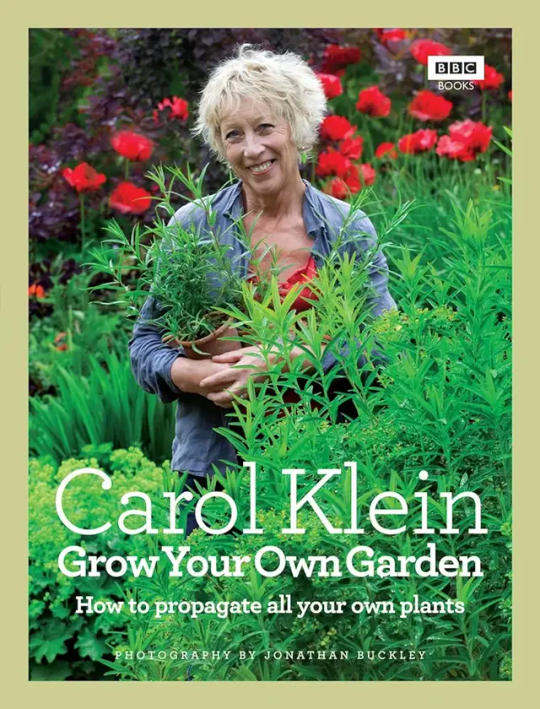
2 notes
·
View notes
Text
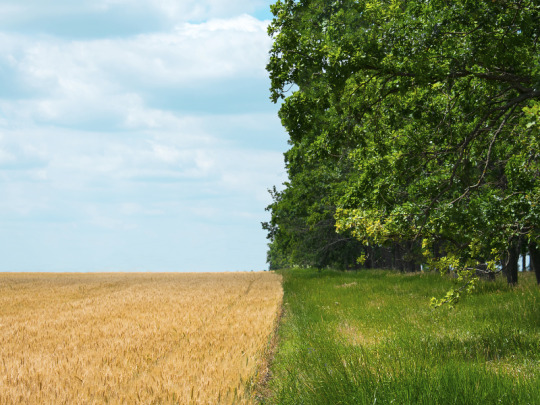
A couple of weeks ago, we discussed the different methods of crop irrigation that farmers use and how climate change is affecting the volume of water needed to keep fields hydrated and healthy here in the northeast. Managing water use wisely by installing efficient irrigation systems is just one of many steps that farms can take to reduce their impact on the local ecology while increasing their profitability and productivity. This week, we’ll touch on the importance of protecting and improving soil health to the future of sustainable farming. Building healthy soil and preventing erosion Sustainable agriculture is often used interchangeably with the term ‘regenerative agriculture’ because of the focus on restoring degraded farmland back to its former vitality and biodiversity. Beginning in the early 1900s, traditional farming techniques underwent a rapid transformation as mechanization replaced animal and human labor. As a result of these changes, the use of artificial fertilizers and pesticides was introduced, farms grew larger, yields increased and free-range, pastured animals were confined to smaller areas or moved into feedlots. During his youth in the 1950s, my father worked as a part-time laborer on a small farm in the north of England where he witnessed firsthand many of these changes occurring in real-time. The farm horse named Kit that he had grown fond of and spoiled with carrots and apples was replaced by a Ferguson tractor, while ancient hedgerows filled with blackberry briars and bountiful plum and damson trees were removed to make it easier for the new tractor to plow the land. He recalls forking out chicken and cow manure from the back of the horse-drawn cart to naturally fertilize the fields and hand-harvesting potatoes amongst other “backbreaking work” that is now performed by machines instead of farmhands. While all this modernization has spiked farm efficiency and production, it has often come at the expense of the health of the farmland, livestock and environment. Regenerative agriculture aims to restore the land back to its former fertility by reintroducing many of the traditional farming techniques of my father’s youth. At its core, it centers on promoting and bolstering soil health as fundamental to a farm’s ability to thrive and prosper well into the future by adopting a range of methods including the following:
Crop rotation and diversity: Rather than planting the same crop in the same field year after year, which eventually depletes the soil of certain nutrients and can lead to pest infestations, farmers introduce a different type of crop each year or at multiyear intervals. They can also include intercropping which involves growing a mixture of crops in the same area.
Cover crops and perennials: Cover crops such as clover, rye, buckwheat, mustard and vetch are planted in fields during the off-season when the ground might otherwise be left bare. This helps protect and build soil health by replenishing nutrients and preventing erosion from extreme weather events that are becoming more frequent due to climate change. Perennial crops such as alfalfa and asparagus keep soil covered, suppress weed growth and maintain living roots in the ground year-round which hold soil in place and helps stabilize the areas in which they are planted.
No or limited use of chemicals: Crop rotation and planting cover crops will naturally reduce or eliminate the need for synthetic pesticides and fertilizers over time by protecting and boosting soil biology. Regenerative agriculture allows for the judicious use of chemicals only when needed, such as when restoring heavily depleted soil to its natural resilience.
Compost, animal and green manure: Farmers can increase the amount of organic matter in their soil and boost its fertility through the application of compost, animal manure and ‘green manuring’ their cover crops which entails plowing under the still-living, undecomposed plants into the ground where they slowly release fertilizing nutrients like nitrogen.
Reducing or eliminating tillage: Traditional plowing (aka tillage) prepares fields for planting and prevents weed growth by mechanically turning over the uppermost layer of soil. Unfortunately, plowing disrupts soil microbiology (bacteria, fungi and other organisms) which causes soil loss and releases carbon stored in the soil’s organic matter into the atmosphere as carbon dioxide, which we all know is a potent greenhouse gas. Alternatively, no-till or reduced-till methods involve inserting crop seeds directly into undisturbed soil, which reduces erosion and conserves soil health.
Agroforestry: Agroforestry refers to the practice of incorporating trees into farmland, such as the plum and damson trees my father remembers in the old hedgerows. By cultivating trees and shrubs on their property and mixing them into their operations, farmers can provide shade and shelter that protect crops, livestock, and water resources, while also leveraging additional income from fruit, syrup, nut, or timber yields. Agroforestry promotes biodiversity on a farm and trees are, of course, critical to slowing the effects of climate change. Plus, trees promote soil health by preventing erosion, fixing nitrogen and supporting the growth of fungi and other soil microbes.
Unlike large, industrial farms that grow monoculture crops and factory farmed animals, the small, local farms that partner with Down to Earth farmers markets have long embraced many of these sustainable agricultural practices. From composting to pasturing livestock to crop diversification, our farms understand the importance of soil health and are invested in protecting the local ecosystems and communities in which they operate, while producing a range of healthy, nutrient dense foods. It’s a win-win for everyone!
#downtoearthmkts#farmersmarket#eatlocal#shoplocal#buylocal#eatdowntoearth#regenerative agriculture#farmersmarkets#agroforestry#crop rotation#cover crop#crop diversification#localfood#no till
4 notes
·
View notes
Text
6/28/23
My brothers added some furniture to the chicken run and the girls seem happy.
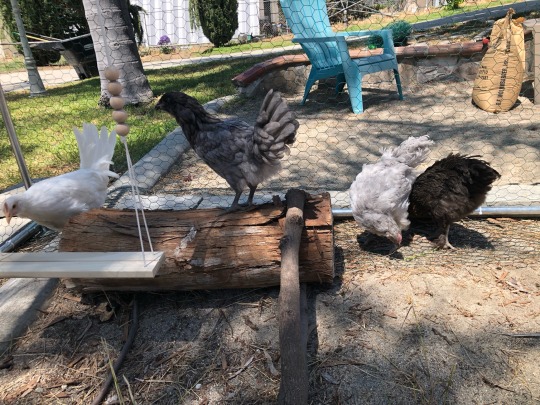
First, my mom and I fixed up the front yard bed. It faces east, getting a few hours of morning sun and shade by noon. There’s an established jasmine in the back that climbs the wall, salvia in the back, 4 society garlics (I think that’s what they are), not sure what the purple flower is, and French marigold.
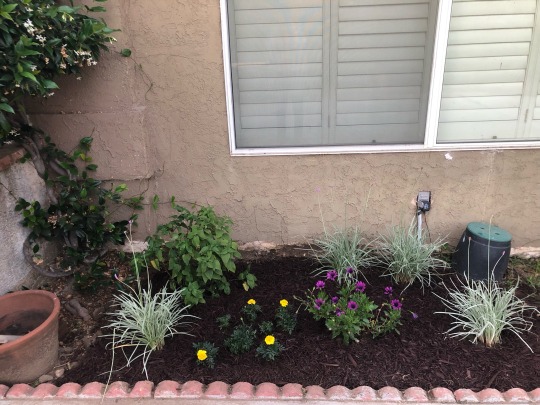
The soil is pretty hard and dry, so I pickaxed some holes for aeration, added steer manure compost (it got mixed in as we planted) and topped with mulch. We’re very proud of ourselves! We found an excellent local nursery with healthy plants and great pricing, so we will return there in the future.
I’m interested in soil restoration at my parent’s house in Inland Empire. It’s hot and dry, lots of hard dirt with grass and weeds. I’m trying to identify some of it, like spurweed and spotted spurge. Spots with tree shade have turf, clover, and other plants.
This article mentions a process of grass herbicides/hand weeding to kill invasive grasses and grow native wildflowers; Fukuoka’s method included clover as ground cover and mulching with straw after each harvest to build rich soil. I’m considering both methods to restore different parts of the yard. I’d like wildflowers/native plant cover on the slopes, for example. I’m hoping to start weeding/sowing by fall or winter, see some results in spring.

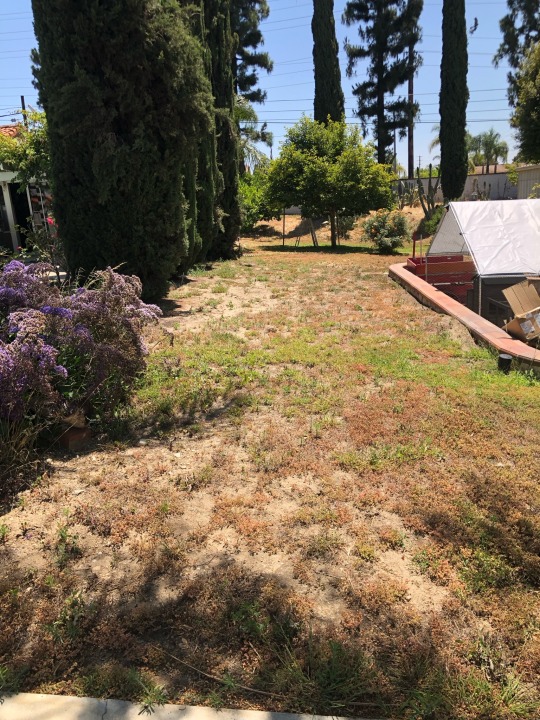
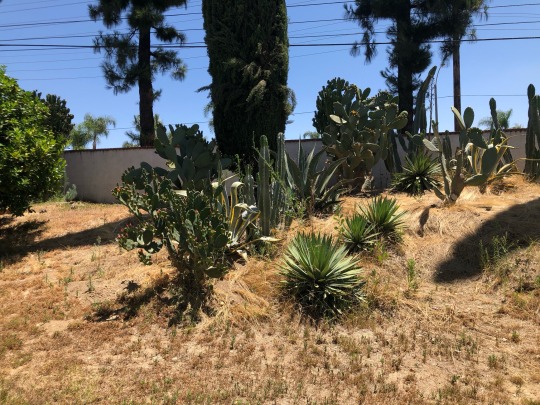
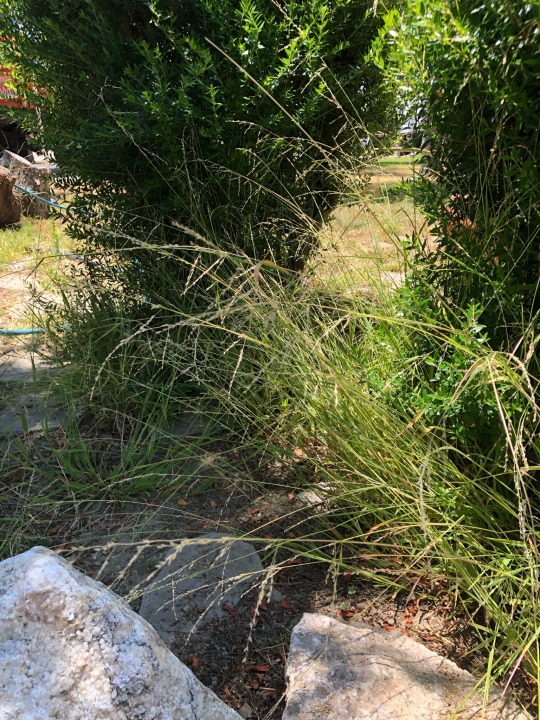
Back in the veggie garden, the tomato culprit has learned to eat the ripe fruits and leave the green ones behind. We’re considering getting a camera to see where it’s getting in. Everything else is growing fine.
2 notes
·
View notes
Text
I think about this all the time! Grocery store food ends up in compost ends up in our soil. Chicken feed ends up in the manure and feathers that become new garden beds. Any vegetables we give away or sell take a teeny pinch of minerals with them, but the roots and cuttings from that same vegetable rot and not only give back some of the minerals, but also additional nitrigen and spongy organic matter and bug/fungus/bacteria food. If we had a humanure setup we could be getting even more back from our food. And we buy a LOT of compost, and I collect bags of leaves from the curbside when I find them.
It's overwhelming, and so much of it is so absurd. Food scraps in the landfill, impossible tose because it's mixed with toxic waste. Urine, a great source of nutrients for plants, wasted. When all it needs is to be diluted 1:1 with water. Feces, mixed with water makes sewage, a horribly dangerous substance. Mixed with leaves and wood chips becomes humanure compost, usable after a year or two.
Oh and wood chips. A WASTE product of managing roads. The food of the forest floor, rotting wood, is so plentiful that you habe to pay to get rid of it.
It's been years since I started seeing nutrient flows constantly in my daily life, and the more I study agriculture, the more I see them.
See, every time you harvest something, you take the nutrients in that item away from the soil, and they go somewhere else. When I put a banana peel in my compost bin, I think (a little gleefully) about how I've just added an exotic, different profile of nutrients to my own property--but I also think about that distant banana plantation that lost tons of nutrients per year to US grocery stores, and I wonder what they replaced those nutrients with.
The farmer across my field grows corn, which gets harvested for feed. Corn is a nitrogen-hungry crop. Every year, that corn sucks up nutrients, which get harvested and shipped away. The farmer, being a conventional farmer, mostly replaces those with a conventional fertilizer. Nitrogen is often applied to fields in the form of ammonia fertilizer, which is made via a process that binds nitrogen in the air with hydrogen from natural gas. This feels like a vast resource, but of course we know it's not inexhaustible and not without cost.
Ideally, said farmer does soil tests and applies a carefully considered amount of ammonia. It is taken up by the growing plants and relatively little is lost. Possibly (often), though, some of the ammonia is leached out via rain and ends up in waterways, where it causes plant overgrowth and algal blooms, which harm the waterways in several ways, and turn those nutrients from a resource into a contaminant.
Meanwhile, the corn is also uptaking a variety of other nutrients from the soil which the commercial fertilizer is NOT replacing. Year by year, those nutrients get shipped off to distant feedlots and depleted in the soil. Eventually, those nutrients are gone from my neighbor's field and, quite possibly, languishing in a manure lagoon somewhere in, say, Indiana, where one can only hope it's properly treated and made into compost. But, you know. Not necessarily.
When I buy compost at the store, it's usually based in either cow manure or "forest products". Hopefully, depending on brand, those forest products MIGHT be collected municipal yard waste. Which is pretty good. Those suburbanites don't want their leaves, I do, win/win.
Except that because those suburbanites raked their yard waste, they now need at some point to fertilize their trees, shrubs, and turf grass. Meanwhile, they've eliminated habitat for the many insects that use leaf litter to either overwinter or reproduce. They may not be counting the costs, but the costs don't stop existing.
The ebb and flow of nutrients is something that, in the current system, goes utterly unregarded by most of the people taking part in the process. Even gardeners bring nutrients onto their soils mostly without thinking about the places those nutrients came from. I think in a sustainable world, that needs to change.
Also probably we need to do a hell of a lot more cover-cropping.
6K notes
·
View notes